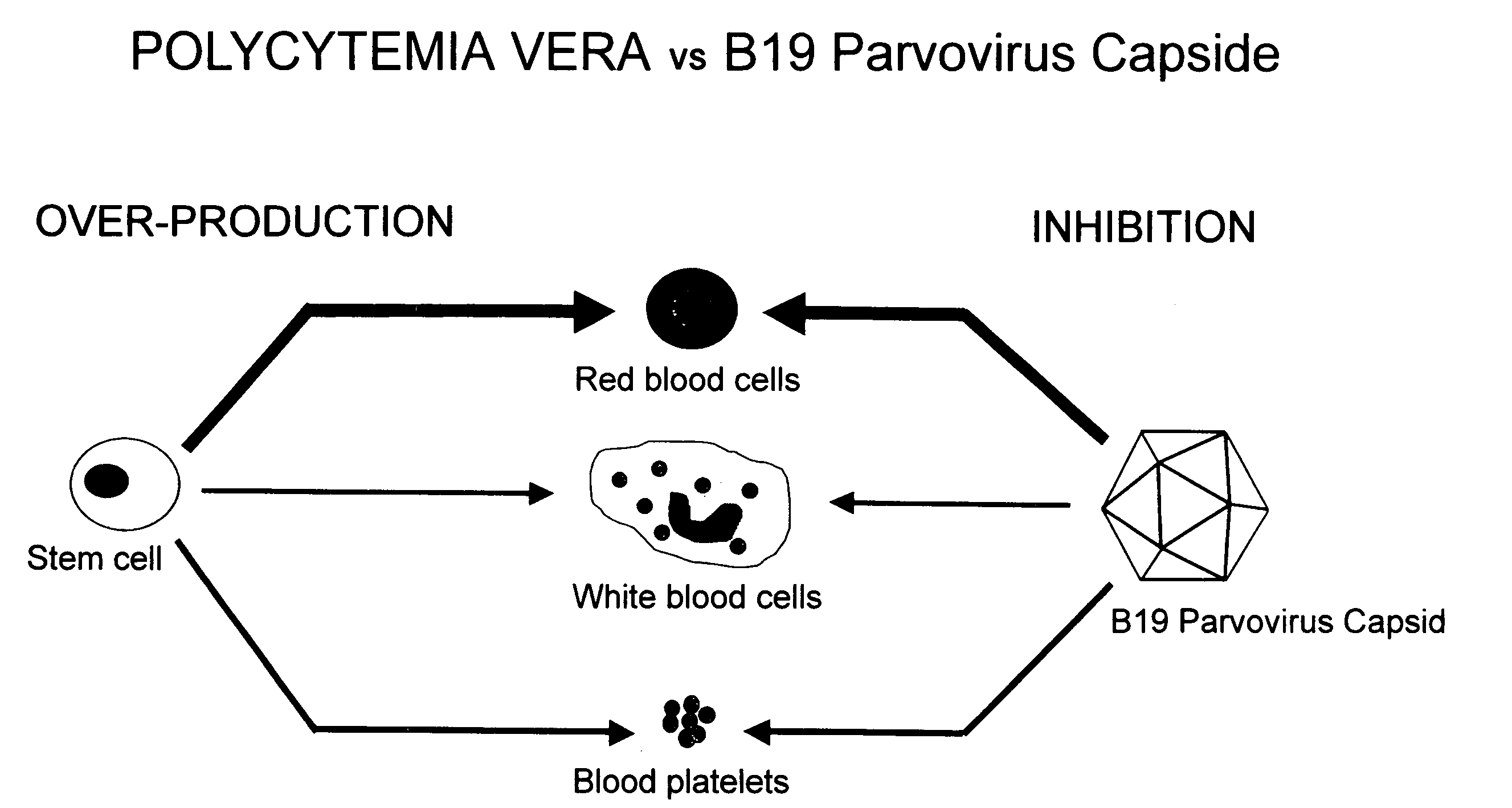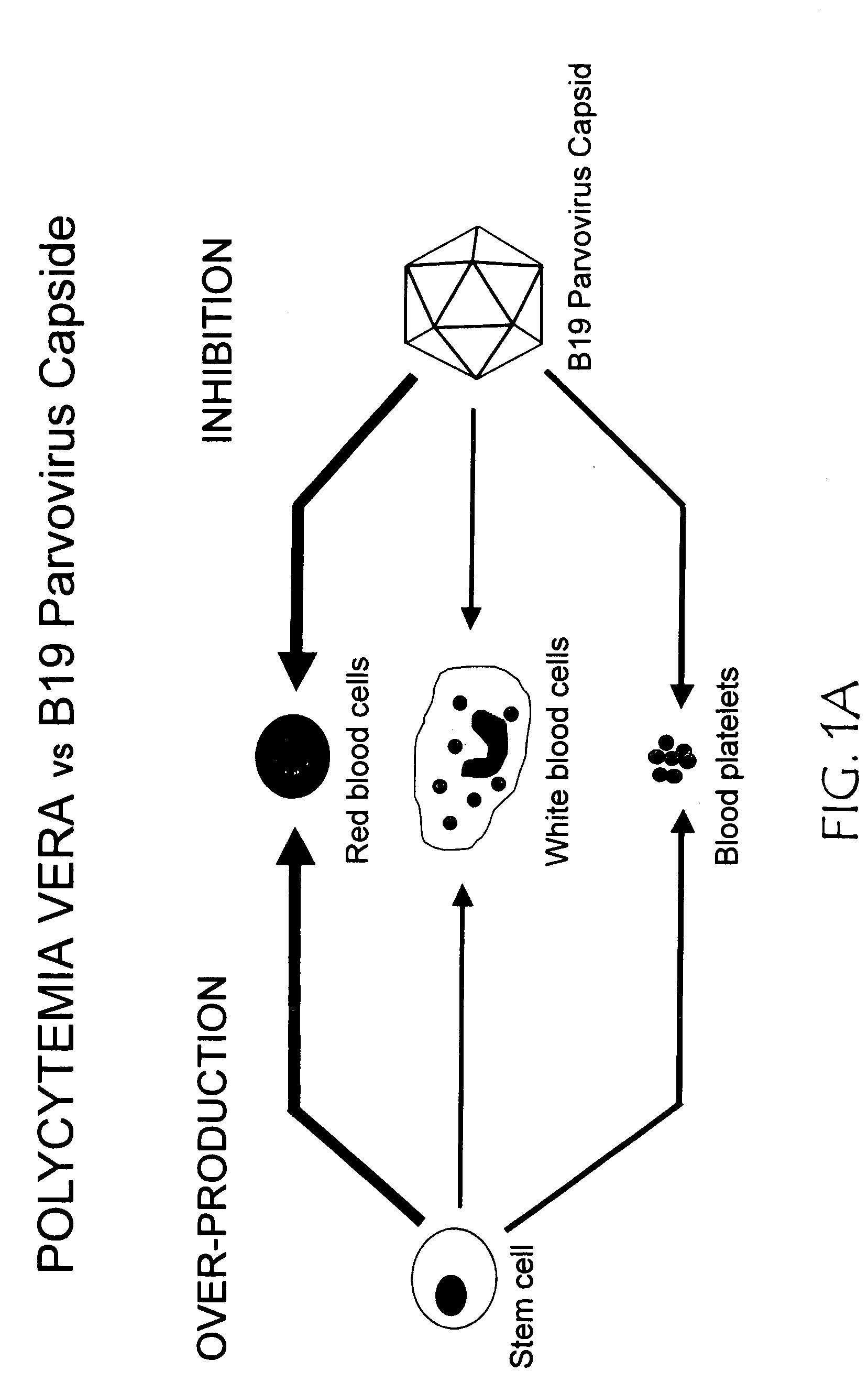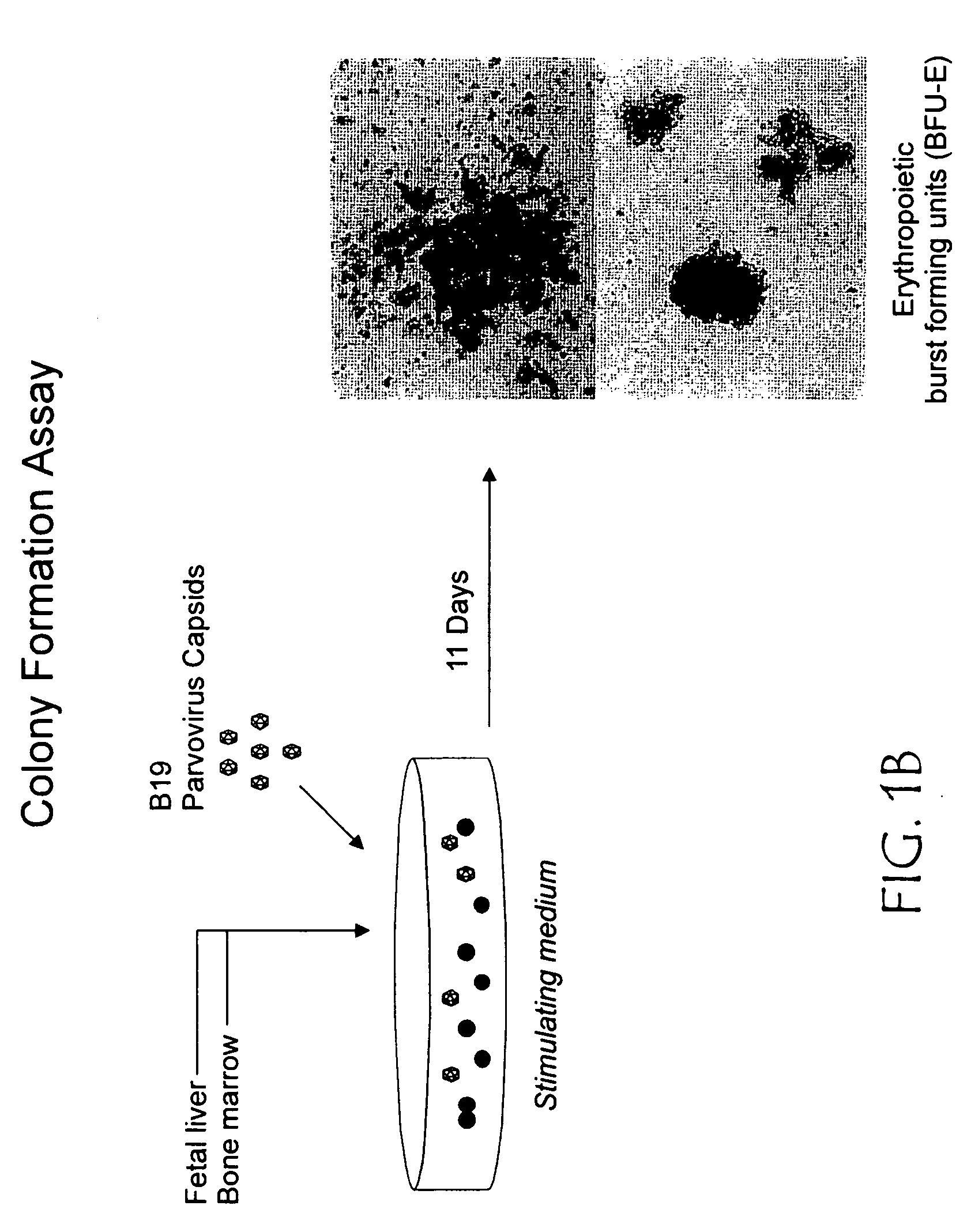Use of parvovirus capsid particles in the inhibition of cell proliferation and migration
- Summary
- Abstract
- Description
- Claims
- Application Information
AI Technical Summary
Benefits of technology
Problems solved by technology
Method used
Image
Examples
Embodiment Construction
[0038] It has been discovered that the B19 parvovirus capsid, B19 parvovirus capsid proteins, or fragments thereof inhibit the growth and / or migration of cells that have a receptor that interacts with a parvovirus B19 capsid or fragment thereof (e.g., a P antigen containing cell). By using colony formation assays, it was determined that B19 parvovirus capsids composed of VP1 and VP2 or VP2 alone inhibit hematopoiesis and, thus, the growth of several different types of cells of hematopoietic origin including human fetal liver cells, human umbilical cord blood cells, and adult bone marrow cells. Using the same type of colony formation assay, it was discovered that B19 parvovirus capsids inhibit the growth of bone marrow cells obtained from Baboons and Macaques. Further, using colony formation assays, it was discovered that fragments of VP2, whether prepared by enzymatic digestion of intact VP2 capsids or by synthesis of peptides corresponding to various regions of VP2, inhibit hematop...
PUM
| Property | Measurement | Unit |
|---|---|---|
| Length | aaaaa | aaaaa |
| Cell proliferation rate | aaaaa | aaaaa |
| Disorder | aaaaa | aaaaa |
Abstract
Description
Claims
Application Information
 Login to View More
Login to View More - R&D Engineer
- R&D Manager
- IP Professional
- Industry Leading Data Capabilities
- Powerful AI technology
- Patent DNA Extraction
Browse by: Latest US Patents, China's latest patents, Technical Efficacy Thesaurus, Application Domain, Technology Topic, Popular Technical Reports.
© 2024 PatSnap. All rights reserved.Legal|Privacy policy|Modern Slavery Act Transparency Statement|Sitemap|About US| Contact US: help@patsnap.com










